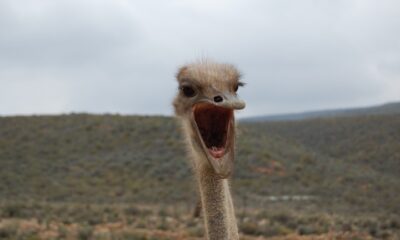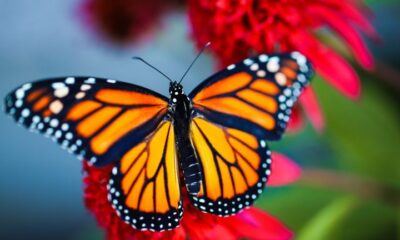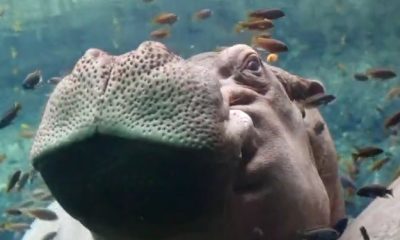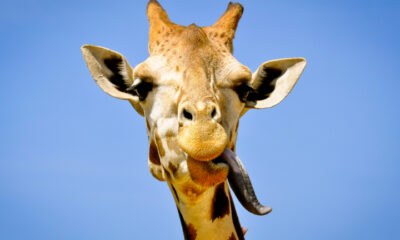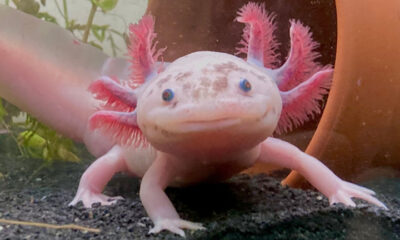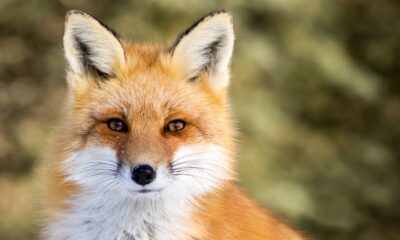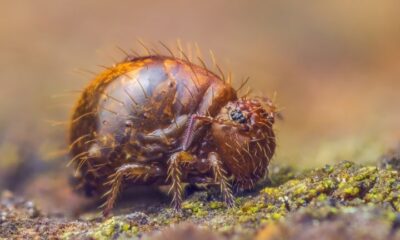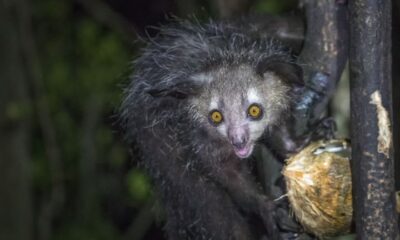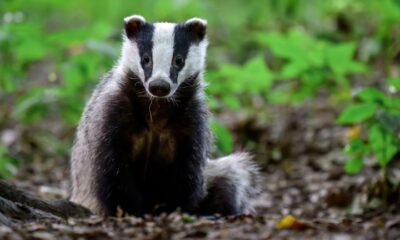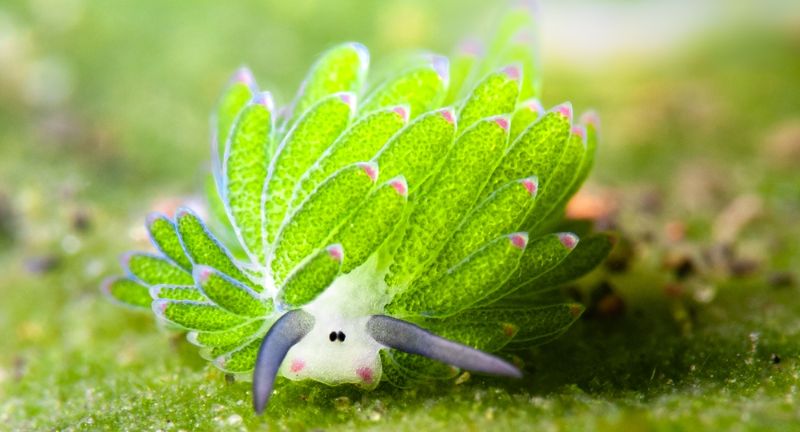
Shutterstock
The world is filled with vibrant and colorful animals, each displaying nature’s incredible palette in unexpected ways. From brilliant blues and radiant reds to patterns of yellow, green, and black, these creatures show that not all bright colors belong solely to birds. These unique animals use their colors for everything from camouflage and mate attraction to warning signs for predators. This list celebrates some of the most stunningly colorful land animals, showcasing their beauty and the vital roles they play in their ecosystems. Get ready to explore 28 of the world’s most eye-catching creatures that add splashes of color to their natural habitats.
Panther Chameleon
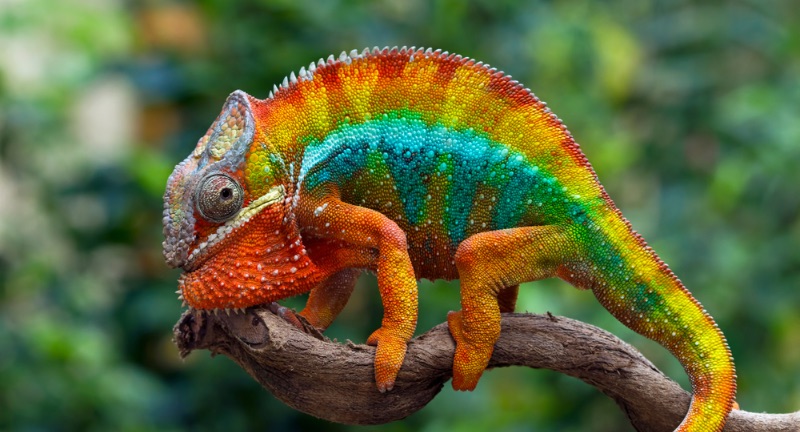
Shutterstock
The panther chameleon is a vibrant species native to Madagascar, known for its stunning range of colors that can include blue, green, red, and yellow. These chameleons can change colors to reflect their mood, temperature, or to communicate with other chameleons. Each region in Madagascar is home to its own unique color variation of panther chameleons, adding even more diversity to this incredible species. Their dynamic colors make them one of the most visually striking reptiles in the world.
Mandrill
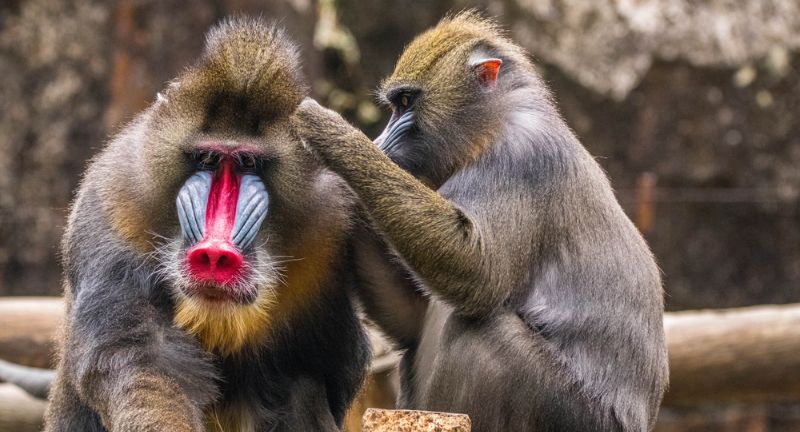
Shutterstock
The mandrill, a primate from Central Africa, is renowned for its vivid facial coloring, which includes shades of blue, red, and yellow around the nose and mouth. Males develop more intense coloration as they mature, using these colors to attract mates and communicate within their social groups. This bright display is unique in the primate world, making mandrills both fascinating and easily recognizable. Their colorful appearance not only helps with social bonding but also adds a splash of color to the rainforest.
Poison Dart Frog
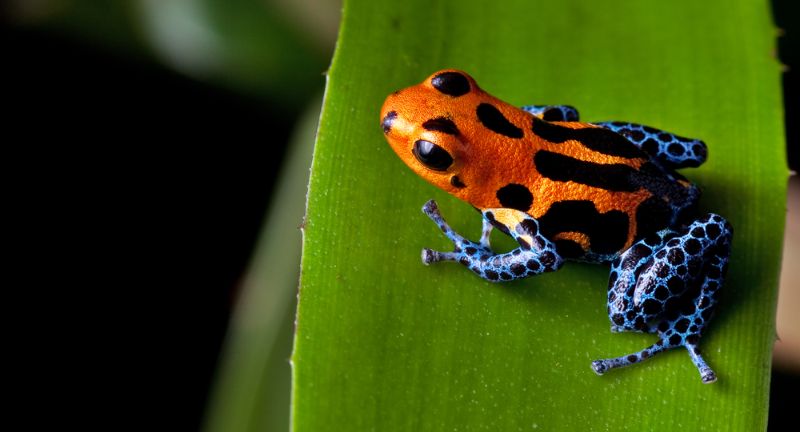
Shutterstock
Poison dart frogs are tiny, vibrant amphibians found in the rainforests of Central and South America, displaying a stunning array of colors from electric blue to bright yellow and red. Their brilliant colors serve as a warning to predators about their toxicity, a defense mechanism that keeps most threats at bay. Some indigenous people historically used the frogs’ toxins on hunting darts, a testament to their powerful chemical defenses. Despite their small size, poison dart frogs are among the most eye-catching animals in the rainforest.
Blue Poison Dart Frog
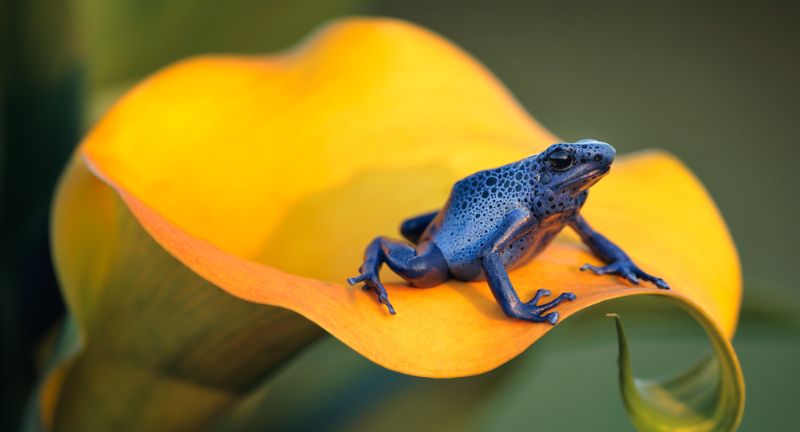
Shutterstock
The blue poison dart frog, native to Suriname, stands out with its intense blue color accented by black spots. Its vivid color is a clear signal to predators of its toxic nature, which can deter even the most persistent threats. Although small, these frogs are highly toxic and serve as a potent reminder of nature’s warning signals. Their mesmerizing color makes them a favorite among wildlife enthusiasts and a true standout in the animal kingdom.
Malayan Green Tree Pit Viper
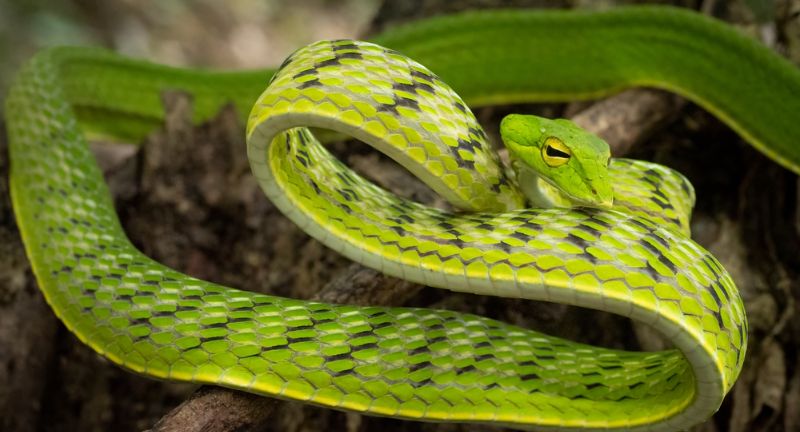
Shutterstock
The Malayan green tree pit viper is a strikingly neon-green snake that resides in the rainforests of Southeast Asia. With scales that can appear to glow, some variations of this viper also have hints of blue or yellow, depending on their specific habitat. Its vibrant colors allow it to blend into tropical foliage, making it an effective ambush predator. Though beautiful, this venomous snake is best admired from afar as it poses a significant threat if approached.
Blue Tongue Skink
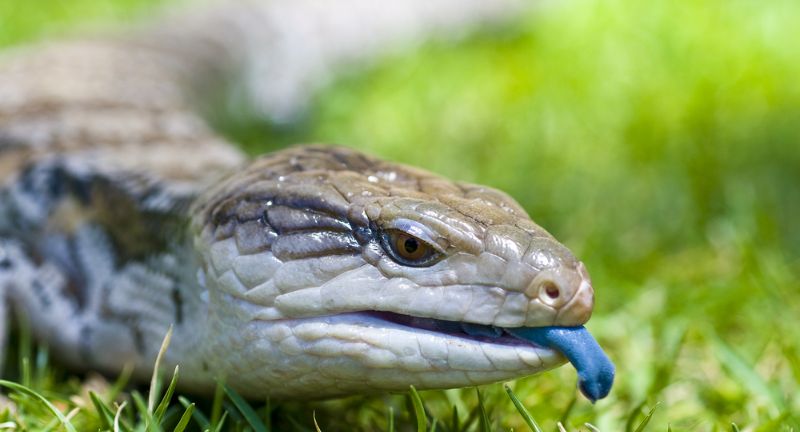
Shutterstock
The blue tongue skink, native to Australia, is easily recognized by its brilliant blue tongue, which contrasts with its brown and yellow body. This blue tongue serves as a defense mechanism, startling potential predators with its unexpected flash of color. Known for its docile temperament, this reptile is popular among pet owners for its unique appearance and calm nature. The blue tongue skink adds a surprising splash of color to Australia’s outback.
Strawberry Poison Dart Frog
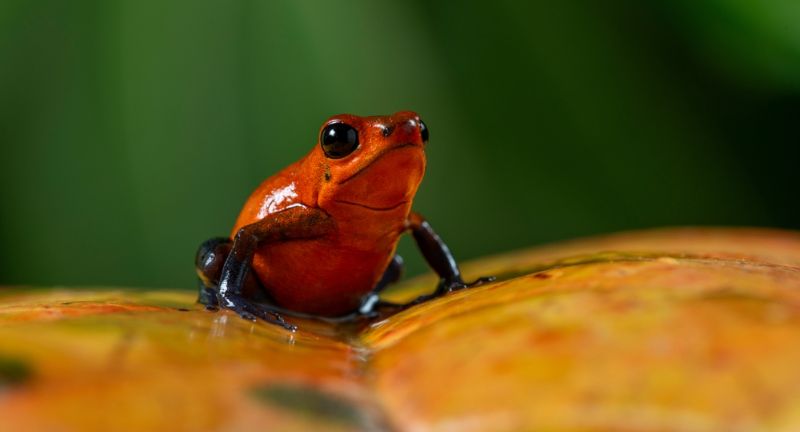
Shutterstock
The strawberry poison dart frog, found in Central America, is known for its bright red body that resembles the color of a ripe strawberry. Some individuals also display contrasting green or blue legs, adding to their eye-catching look. Like other poison dart frogs, its vibrant color warns predators of its toxicity, serving as an effective deterrent. This tiny amphibian is one of the most colorful and striking creatures in its habitat.
Red-eyed Tree Frog
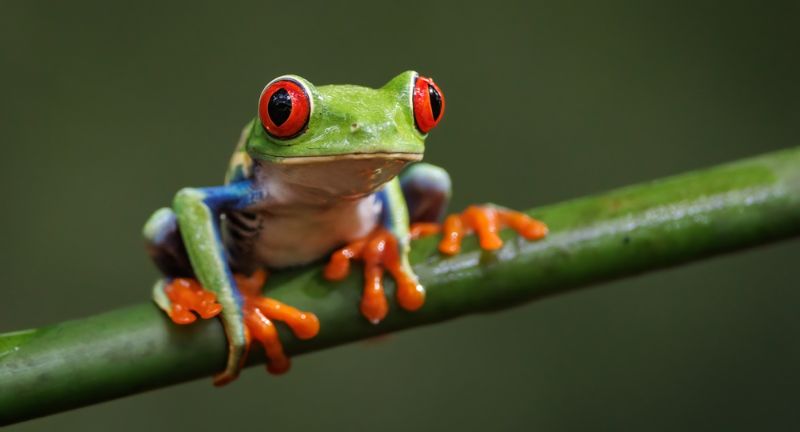
Shutterstock
The red-eyed tree frog, native to Central America, is famous for its bright green body, vibrant red eyes, and flashes of blue and yellow on its sides. Its red eyes serve as a startle effect, shocking predators with a sudden flash of color when the frog opens its eyes. This amphibian’s bright colors provide camouflage among foliage while adding a beautiful display of nature’s artistry. Red-eyed tree frogs are a quintessential symbol of the tropical rainforest’s biodiversity.
Golden Poison Frog
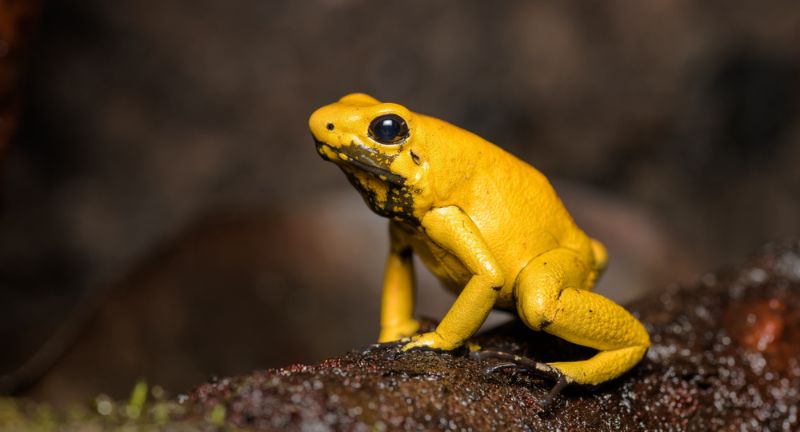
Shutterstock
The golden poison frog, native to Colombia, is one of the world’s most toxic animals, with a vibrant yellow color that warns predators of its deadly nature. This tiny but potent frog’s toxins were historically used by indigenous people on blow darts for hunting. Its golden hue is not only beautiful but serves as a stark warning in the natural world. The golden poison frog’s intense coloration highlights both its beauty and its danger.
Rainbow Grasshopper
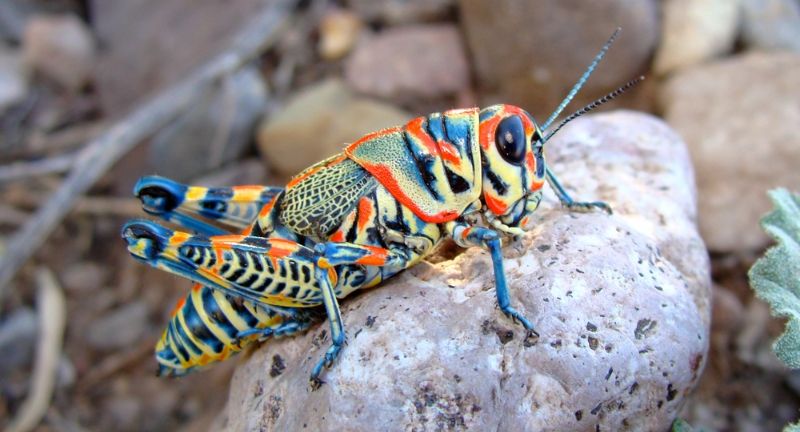
Shutterstock
The rainbow grasshopper, native to North America, showcases a vibrant blend of colors, including red, yellow, and green. Unlike other grasshoppers that use camouflage, its bright colors are intended to startle and confuse predators. Its colorful pattern is as functional as it is beautiful, providing a defense mechanism in the form of a bold display. The rainbow grasshopper is one of the most striking insects in the grasslands it inhabits.
Blue Dragon Sea Slug
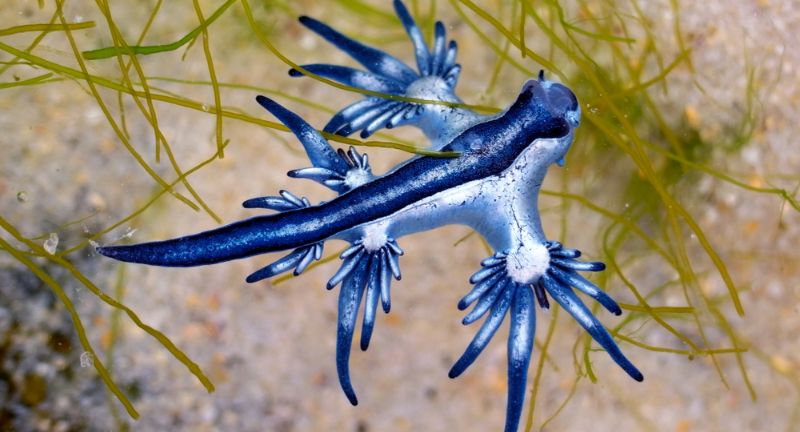
Shutterstock
The blue dragon sea slug, although marine, is occasionally seen near shorelines, appearing as a floating silver and blue marvel. Its vibrant color helps it blend in with the ocean surface, protecting it from both aerial and underwater predators. Known for feeding on the venomous Portuguese man o’ war, this slug can store venom for its own defense. Its bright blue hue not only wards off predators but also adds to its ethereal beauty.
Gila Monster
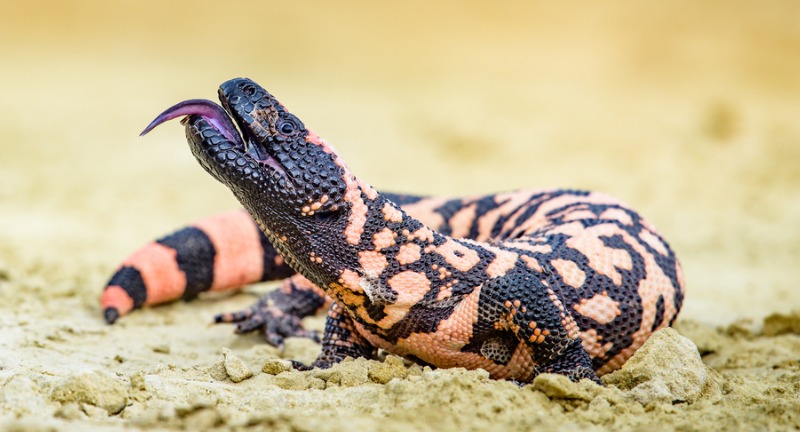
Shutterstock
The Gila monster, found in the southwestern United States, is one of the few venomous lizards in the world. Its skin displays bright orange and black patterns that serve as a warning to potential threats. These bold colors also allow it to blend with the rocky desert landscape, making it difficult for prey to detect. Despite its eye-catching appearance, the Gila monster is a secretive creature best admired from afar.
Panamanian Golden Frog

Shutterstock
The Panamanian golden frog is a critically endangered species known for its stunning yellow color. This vibrant hue acts as a warning to predators about its toxicity, ensuring it stays safe in its natural habitat. Native to Panama, this frog has become a symbol of the country’s rich biodiversity. Conservation efforts are underway to protect this iconic and beautiful amphibian.
Harlequin Toad
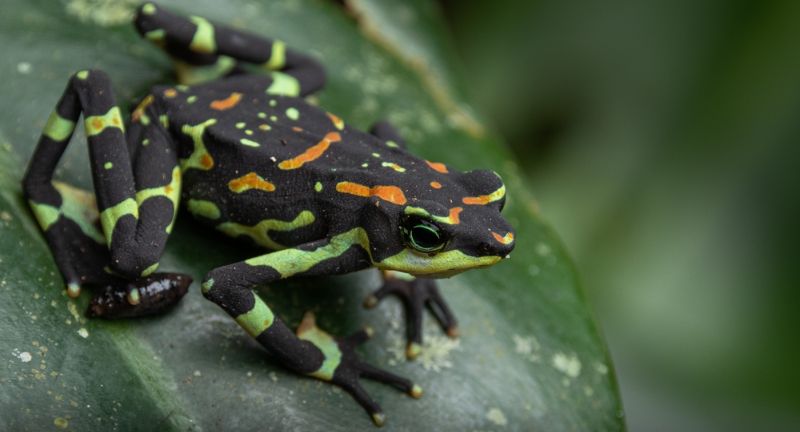
Shutterstock
The harlequin toad, found in South America, showcases a colorful mix of yellow, green, red, and black. Each individual toad displays a unique pattern, making every harlequin toad truly one-of-a-kind. Its bold colors serve as a warning to predators of its toxicity, helping to keep it safe in the rainforest. Many species of harlequin toads are endangered, adding an urgency to efforts for their conservation.
Indian Bullfrog

Shutterstock
The Indian bullfrog, found in South Asia, undergoes a stunning transformation during breeding season when males turn bright yellow. This color change, accompanied by a vivid blue throat patch, helps attract mates in the competitive breeding environment. Outside of the breeding season, they revert to a more camouflaged green-brown shade. Their seasonal color display is one of the most vibrant in the amphibian world.
Electric Blue Gecko
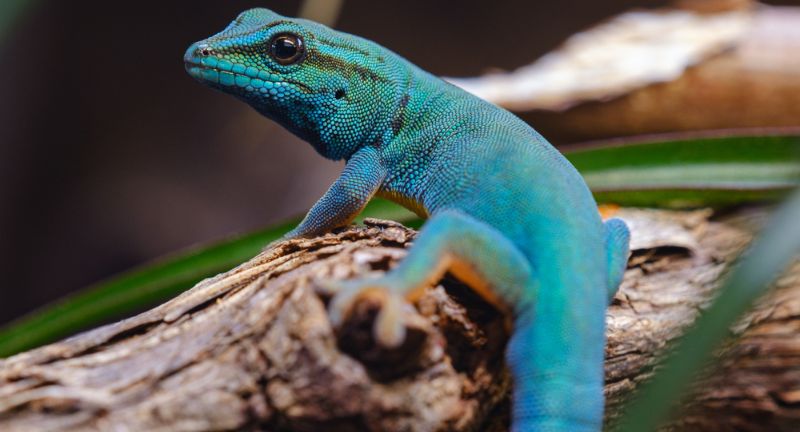
Shutterstock
The electric blue gecko, native to Tanzania, is known for its strikingly intense blue color that almost appears to glow. Males are vivid blue, while females have a more subdued brownish-green color. This small gecko’s vivid color makes it a popular pet, although conservation efforts are crucial to protect its limited wild population. The electric blue gecko is a shining example of nature’s beauty in miniature.
Nudibranchs

Shutterstock
Nudibranchs, commonly known as sea slugs, are famous for their kaleidoscope of colors and intricate patterns. Found near tide pools and along shorelines, they display hues ranging from electric blue to bright orange. Their colors often signal toxicity or unpleasant taste, deterring potential predators. Nudibranchs are among the ocean’s most colorful creatures, showing off the incredible variety in marine life.
Golden Orb Weaver Spider
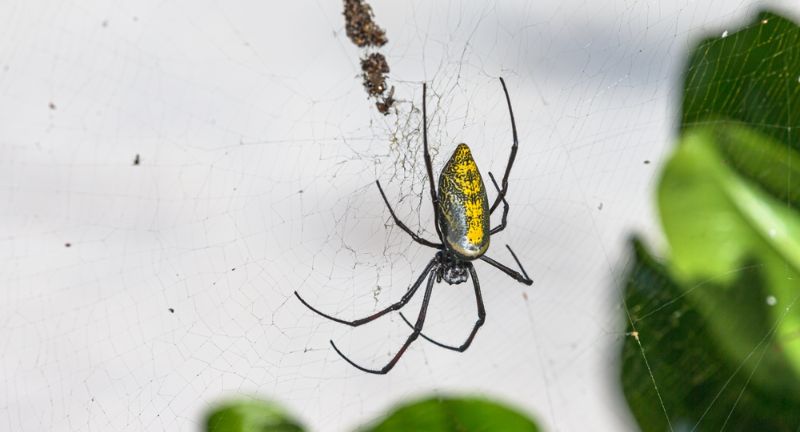
Shutterstock
The golden orb weaver spider, native to tropical regions, is known for its unique golden-hued silk and the striking yellow, black, and red coloring on its body. Its webs are incredibly strong, capable of trapping larger prey, and its vibrant color helps it attract mates. The spider’s colorful appearance can often blend with the sunlit surroundings, making it a master of camouflage. Though its appearance is intimidating, the golden orb weaver poses little threat to humans.
Red Velvet Mite
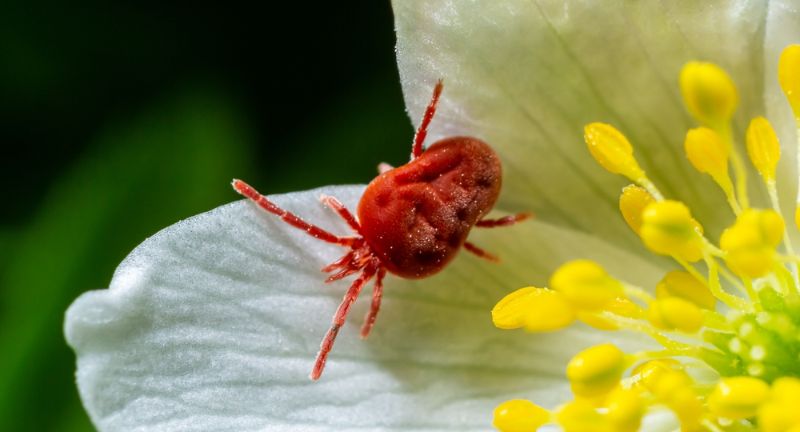
Shutterstock
The red velvet mite is a tiny creature found in soil and leaf litter, distinguished by its bright red, velvet-like appearance. Its bold color serves as a warning to predators of its unpleasant taste and toxicity. Although small, these mites play a crucial role in breaking down organic matter, aiding in soil health. Their vibrant red color and texture make them unique and visually striking.
Bumblebee Millipede
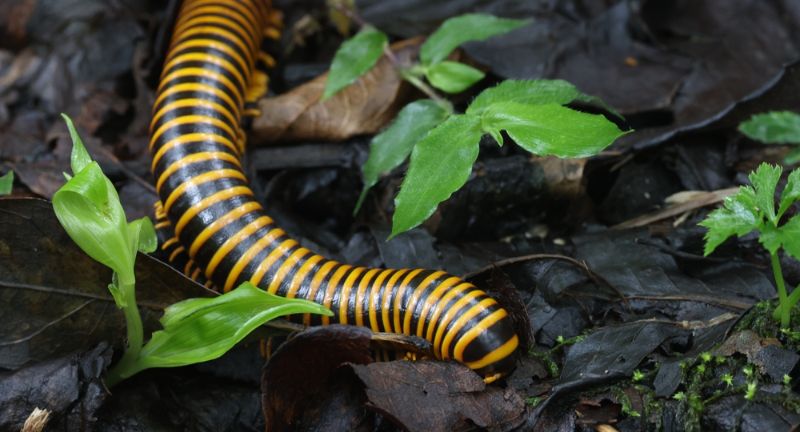
Shutterstock
The bumblebee millipede, native to the southeastern United States, sports bright yellow and black stripes, resembling the coloration of a bumblebee. Though harmless, it can secrete a foul-smelling liquid to deter predators. Its bold stripes are both a warning and a form of camouflage on the forest floor. This unique coloring makes the bumblebee millipede one of the most visually distinct insects in its habitat.
Axolotl
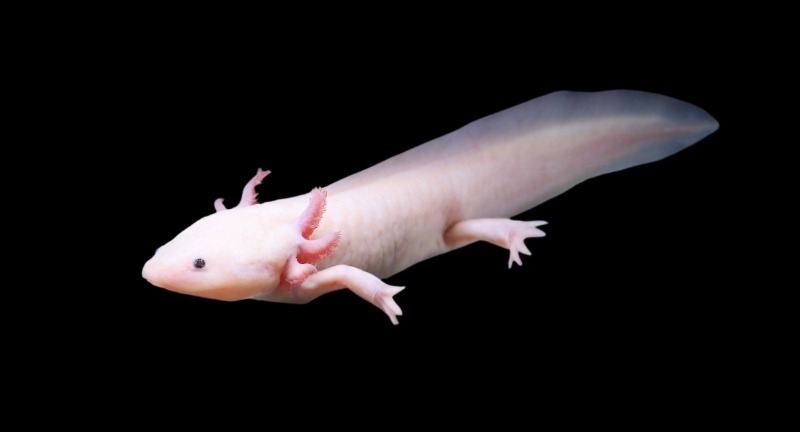
Shutterstock
The axolotl, native to Mexico, is an unusual amphibian known for its ability to retain its juvenile features throughout its life. Commonly found in colors ranging from pink and white to dark brown, the albino or leucistic axolotls have a unique, pale appearance. Their regenerative abilities make them a subject of scientific fascination and a popular pet. Axolotls’ charming, unusual appearance has captivated both researchers and pet enthusiasts alike.
Mimic Poison Frog
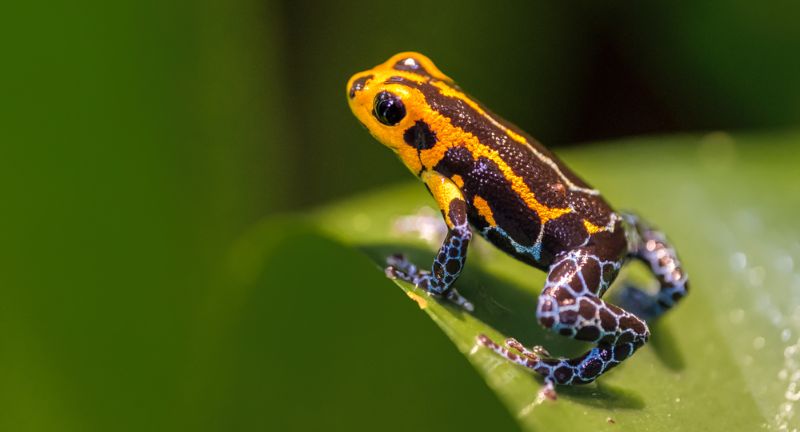
Shutterstock
The mimic poison frog, found in the Amazon, displays a range of colors such as red, blue, yellow, and black. This species mimics other more toxic frogs, using its bright colors to ward off predators despite being less toxic itself. Its unique strategy of mimicry allows it to avoid threats effectively, showcasing nature’s creative adaptations. These frogs are a colorful example of survival tactics in the rainforest.
Emerald Swift Lizard

Shutterstock
The emerald swift lizard, found in Central America, has dazzling scales in shades of green and blue that shimmer in sunlight. Males display more intense colors, especially during mating season, to attract potential mates. The lizard’s scales provide excellent camouflage in the forest, blending seamlessly with leaves and foliage. The emerald swift lizard is as beautiful as it is stealthy, a true marvel of nature’s design.
Sulawesi Forest Toad
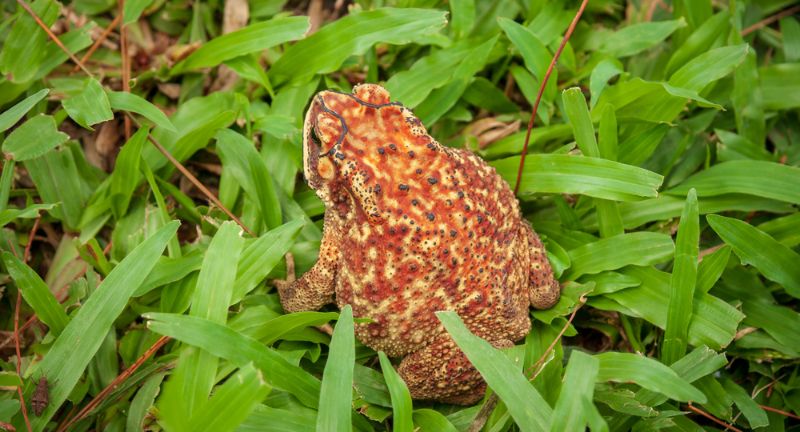
Shutterstock
The Sulawesi forest toad, found in the forests of Indonesia, displays vivid patterns of green, yellow, and red across its body. These colors help it blend into the forest floor while signaling toxicity to potential predators. This unique toad is one of the most visually striking amphibians in its region. Its colorful patterns offer both beauty and a natural defense against threats.
Halloween Crab
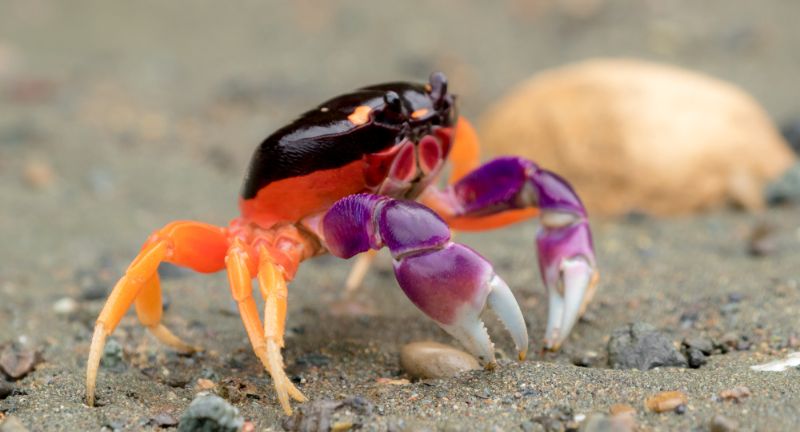
Shutterstock
The Halloween crab, native to Central America, is known for its bold black and orange coloration that resembles a Halloween costume. Nocturnal and primarily found in rainforests, it adds a touch of festive color to the landscape. This terrestrial crab is both mysterious and vibrant, with its colors serving as camouflage on the forest floor. Its unusual appearance has made it a favorite among crab enthusiasts and nature lovers.
Glass Frog
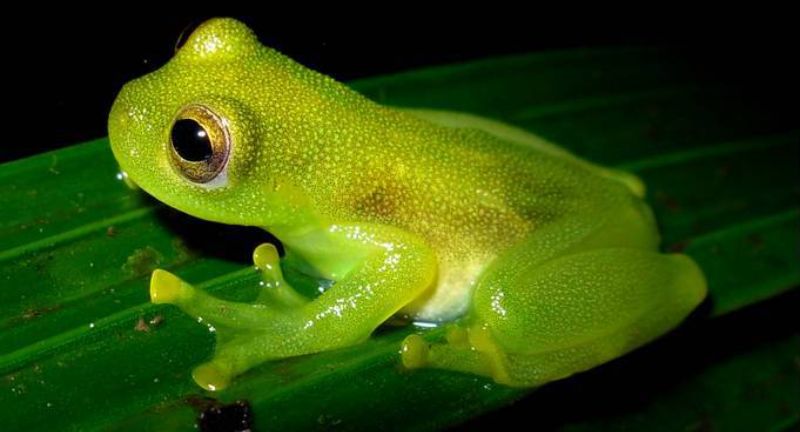
Shutterstock
Glass frogs, native to Central and South America, are known for their translucent skin that reveals their inner organs. Their green bodies allow them to blend seamlessly with the leaves, providing excellent camouflage from predators. Despite their delicate appearance, glass frogs are well-adapted to their rainforest habitats. Their unique transparent look adds a mesmerizing aspect to their already fascinating appearance.
Tiger Salamander
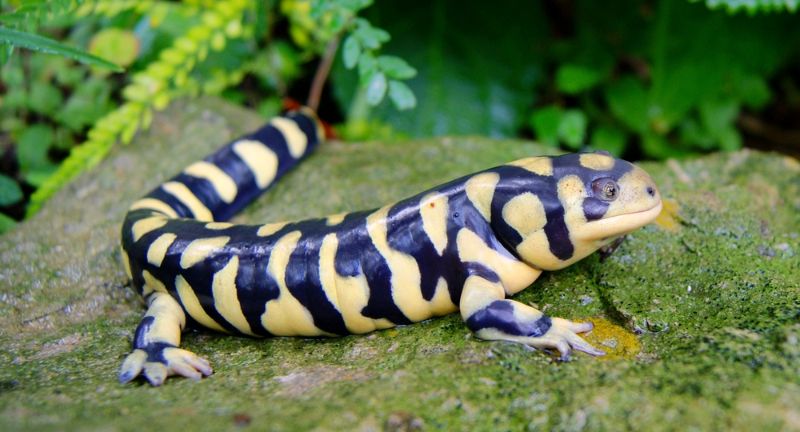
Shutterstock
The tiger salamander is adorned with distinctive yellow and black stripes or spots, making it easily recognizable. This North American salamander’s coloring provides excellent camouflage among fallen leaves on the forest floor. As one of the largest terrestrial salamanders, it also has an impressive presence in the wild. Its bold pattern and sizable form make it a striking example of amphibian beauty.
Rainbow Agama
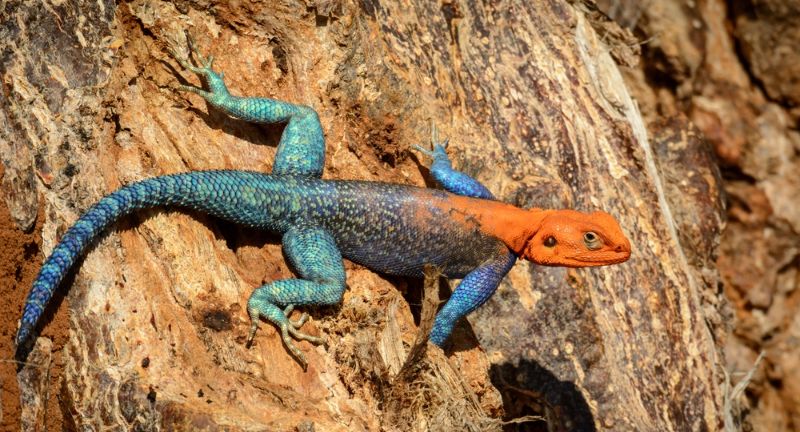
Shutterstock
The rainbow agama, native to Africa, is known for its vivid colors, especially during the mating season when males display bright hues of blue, red, and yellow. These colors help males attract mates and assert dominance among other males. Often seen basking on rocks in the sun, their coloration is particularly vibrant against the desert landscape. The rainbow agama is a beautiful and dynamic addition to the reptile world.
Conclusion
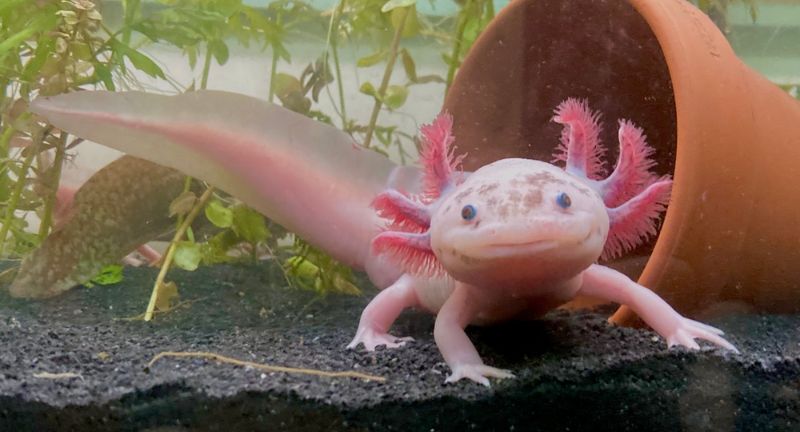
Shutterstock
From the rainforest floor to sunlit deserts, these colorful animals reveal nature’s creativity and diversity. Each species’ unique colors serve an important purpose, whether it’s to attract mates, warn off predators, or blend into the surroundings. Together, they remind us of the incredible variety of life on Earth and the many ways that animals adapt to survive and thrive. Celebrating their colors brings an appreciation for the beauty and complexity found in the natural world. Next time you explore nature, look out for these vibrant creatures adding a splash of color to their habitats.






























